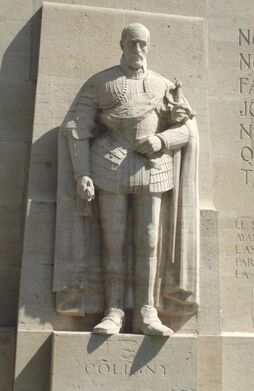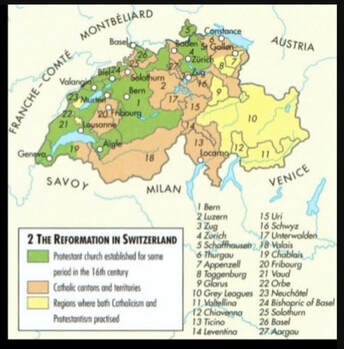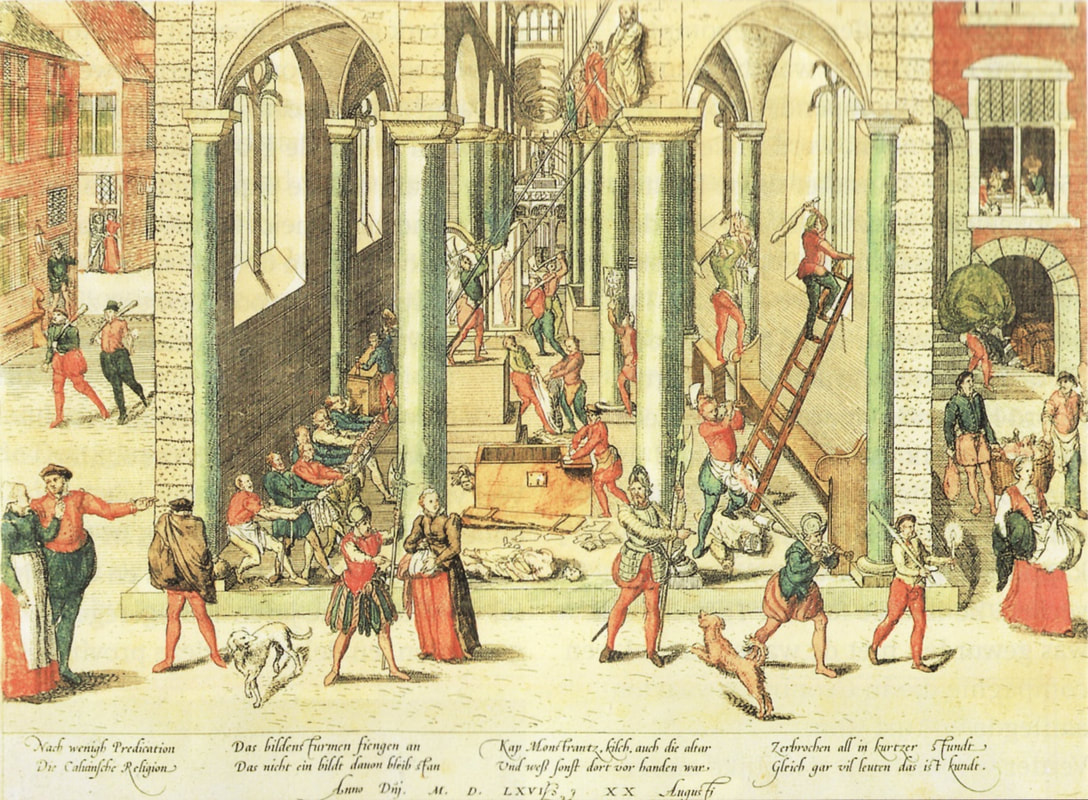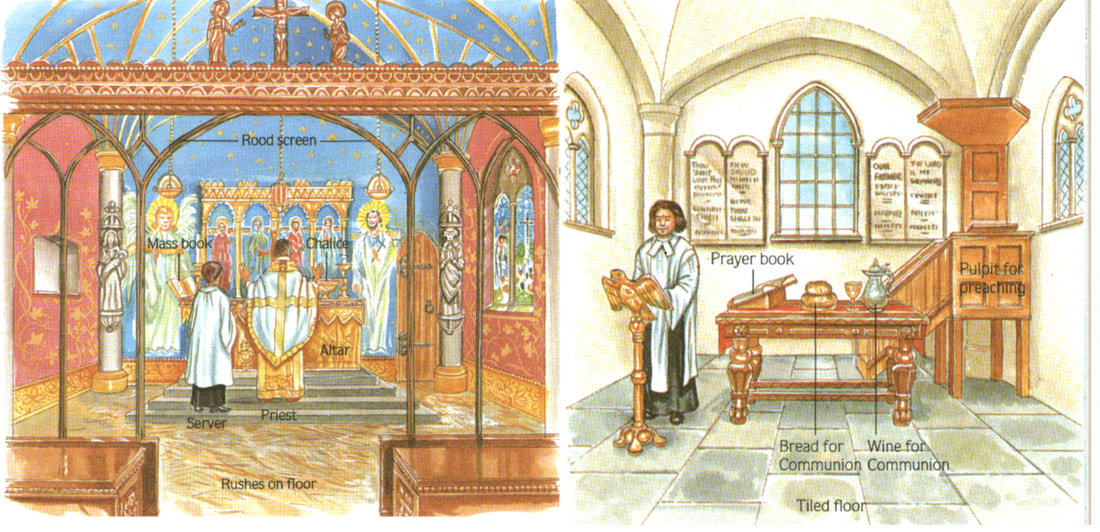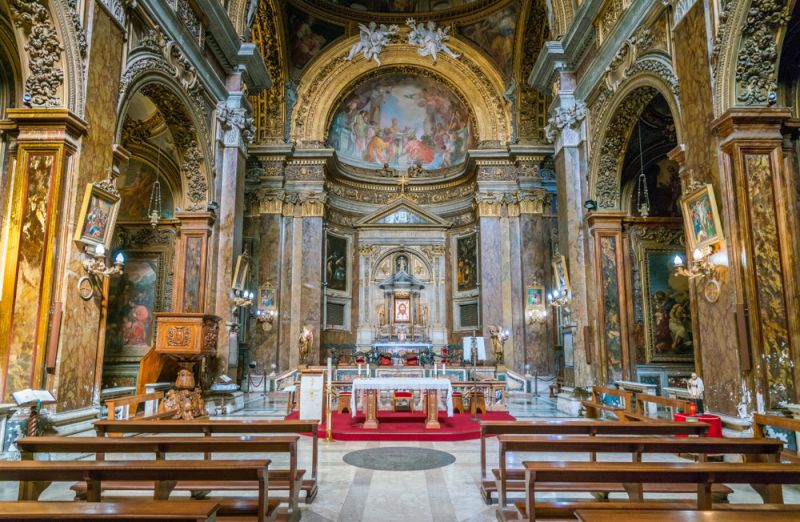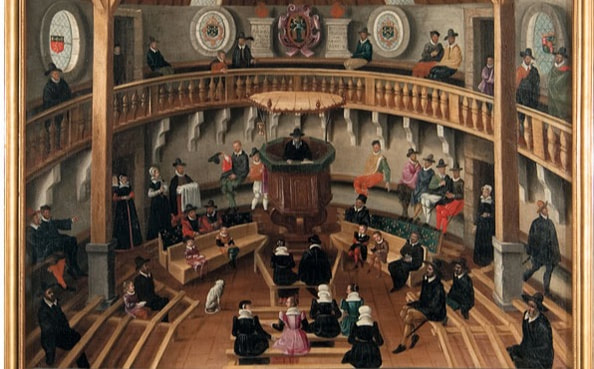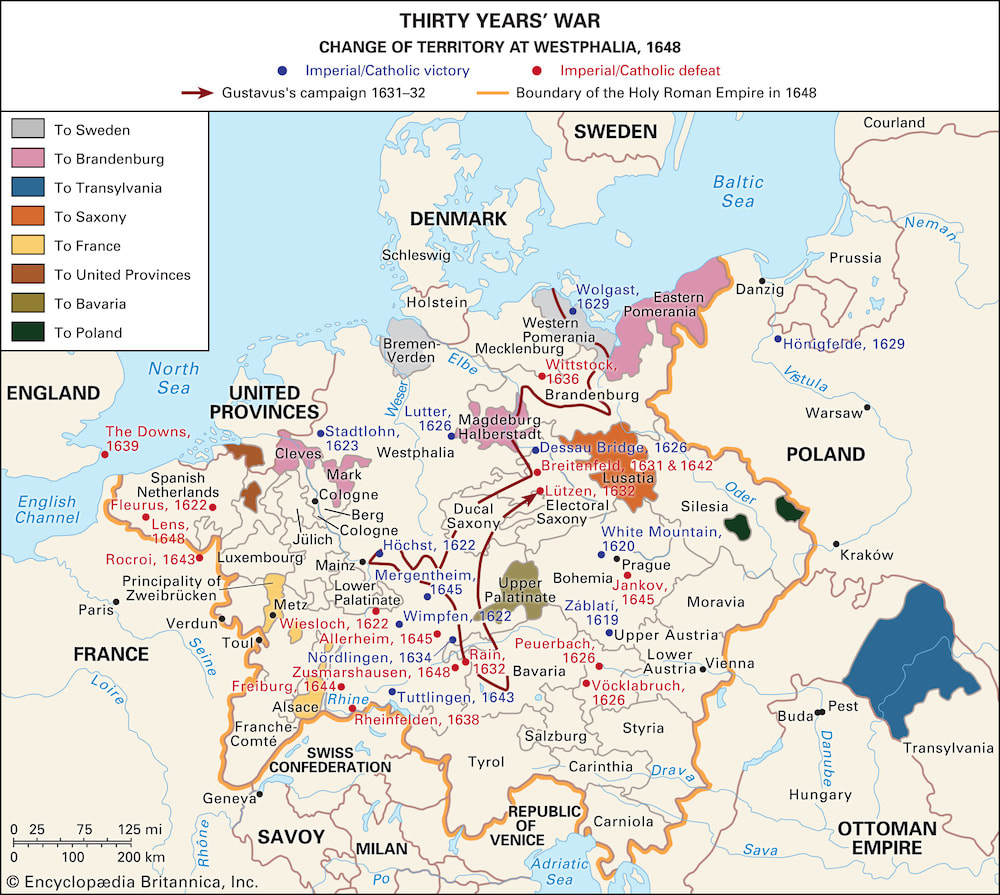Lesson 5 - Wars of Religion.
Big questions and some more answers
So what big questions did we address last lesson? Once again we saw that ideas and beliefs can be important causes of war and have consequences for the way in which wars are fought. There is little doubt that the way the conquistadors treated native Anericans had much to do with their prejudice that Christianity was the only true faith. But once again we also saw the importance of the economic causes of war. The desire for valuable raw materials and precious metals led Europeans to impose themselves on native American by force. These first examples of modern imperialism also illustrated the importance of technological development to the outcome of war. Once European's had discovered a reliable way of accessing the Americas, the advantages they derived from literacy, steel production and gunpowder were clear for all to see.
Wars, we said, tend to be unusually important 'turning points' in human history. There are few greater consequences in world history than what happened in the Americas as a result of conquest and disease. The millions of natives who died in the Americas and millions more Africans who became victims of the slave trade, mark a turning point in world history after which the world is made in the image of Europe. The riches and trade it enabled resulted in a transformation of the European economy and established the basis of the capitalist system that runs world today. The European domination of the world is only just coming to an end. That the statues to the imperialists and slave traders are finally being pulled down, is evidence enough that the world is moving on and the old history, written by the old victors, has finally had its day. No longer is it acceptable to tell stories of the past that ignore the voices of those that were defeated or the victims. Where once we built statues to heroes, we now question what it means to be a hero.
So what big questions did we address last lesson? Once again we saw that ideas and beliefs can be important causes of war and have consequences for the way in which wars are fought. There is little doubt that the way the conquistadors treated native Anericans had much to do with their prejudice that Christianity was the only true faith. But once again we also saw the importance of the economic causes of war. The desire for valuable raw materials and precious metals led Europeans to impose themselves on native American by force. These first examples of modern imperialism also illustrated the importance of technological development to the outcome of war. Once European's had discovered a reliable way of accessing the Americas, the advantages they derived from literacy, steel production and gunpowder were clear for all to see.
Wars, we said, tend to be unusually important 'turning points' in human history. There are few greater consequences in world history than what happened in the Americas as a result of conquest and disease. The millions of natives who died in the Americas and millions more Africans who became victims of the slave trade, mark a turning point in world history after which the world is made in the image of Europe. The riches and trade it enabled resulted in a transformation of the European economy and established the basis of the capitalist system that runs world today. The European domination of the world is only just coming to an end. That the statues to the imperialists and slave traders are finally being pulled down, is evidence enough that the world is moving on and the old history, written by the old victors, has finally had its day. No longer is it acceptable to tell stories of the past that ignore the voices of those that were defeated or the victims. Where once we built statues to heroes, we now question what it means to be a hero.
Heritage Object - International Monument to the Reformation Geneva
|
The Reformation Wall in Geneva was unveiled in Geneva, in 1909. It commemorates some of the main individuals and events associated with the Protestant Reformation and the 400th anniversary of the birth of Jean Calvin, one of the most important figures of the movement. (See below)
Gaspard de Coligny (Left) who features on the wall, was a French nobleman, best remembered as a prominent Huguenot leader in the French Wars of Religion. Huguenot was the name given to French Protestants. We are going to find out more about his fate in the case study for this lesson |
|
A bit of background
Hopefully you remember your work on the Reformation in 10e. Dramatic events in Germany from 1521 to 1525, saw Martin Luther make his famous break from the Catholic Church which split the western Christian church in two. What Luther did is undermine the Catholic Church with his interpretation of the Bible, in particular, Paul’s letter to the Romans. Romans 1:17 'For therein is the righteousness of God is revealed from faith, to faith: as it is written: 'The just shall live by faith.' Luther famously argued, all you need is faith. Solo fide. |
|
By rejecting the orthodoxy, (the right of the church alone to interpret the word of God) Luther undermined the three features of Catholicism which had helped keep medieval society stable.
Medieval Christianty |
Martin Luther |
The views of the individual did not matter, most individuals were peasants who could neither read nor write. The church controlled what it was possible for individuals to believe, therefore belief was not individual but communal. |
The individual and their conscience do matter. Luther's belief in Solo Fide meant that everyone should have a chance to communicate directly with God. Translating the Bible into the vernacular (English, German, French etc.) would enable all to have direct access to His word. |
It was not an egalitarian society with individual rights, but rather an inegalitarian society in which people had duties to the community depending on the feudal 'station' they were born in to. If you are born a serf, you do labour service to the lord of the manor. |
Luther was egalitarian. He spoke about a 'priesthood of all believers', everybody had a direct line to God. In contrast the Catholic church gave special roles to priests, bishops and the whole hierarchy of the church, as intermediaries between God and the congregation. They spoke Latin, wore fancy clothes, big hats and sat apart. |
God ordained this social hierarchy; kings and nobles ruled because they enjoyed a divine right to do so. Rebellion could never be justified. The job of the individual is to care for his soul to guarantee a heavenly afterlife. |
Luther taught that God does not provide authority to the actions of kings. In Luther's 'two kingdoms' theory, there is a kingdom of God and and kingdom of princes. On earth, it is kings that have authority. This idea would prove to be a popular with German princes in their arguments with Italian popes. |
Luther's religious reform quickly mutated into a political revolution. Once the authority of the church was questioned, then all authority was up for debate. If you allow all to read and interpret the Bible for themselves, some will read into the Bible that the religious equality should also be a social equality. And when these inflammatory ideas could be spread easily through with the printed word then revolutionary violence was quick to follow. This is true of all revolutions. Revolutions undermine established authority, but once you allow some criticisms of authority it is very difficult to stop. Luther unleashed a wave of ideas over which he had no control.
|
Zwingli and the religious wars in Switzerland
Another important name on the Reformation Wall is that of Zwingli. Huldrych Zwingli was born in 1484, in Wildhaus, in the Toggenburg valley of Switzerland, just a few months after Martin Luther. He came to very similar conclusions about the Catholic Church as Luther, but did so independently and went further. For example, Zwingli noted that nowhere in the Bible are there rules about food and fasting. During Lent in 1522 Zwingli led a small group of devotees to eat sausage and eggs, and to therefore break with the church convention of the 40 days of fasting (not eating meat, milk, cheese etc.) in the run up to Easter (Lent). Next Zwingli challenged the church on the issue of the celibacy of priests and the use of images in church. In 1523, Zwingli outlined his arguments in the 67 Articles. In Zurich in 1524 (see right), the council instructed churches to remove all religious images so that people would be encouraged to pray to directly to God, not via objects that could be seen and touched (iconoclasm). This whitewashing of churches became a notable practical consequence of the Reformation. But he didn’t completely agree with Luther about everything. At Marburg castle in 1529 Luther and Zwingli famously failed to agree on the significance of the Eucharist and transubstantiation. Zwingli argued that the bread and wine were mere symbols, but Luther still clung to the Catholic belief that Jesus was actually present. Zwingli’s ideas began to spread throughout Switzerland but they also faced serious opposition. The Swiss Confederation in Huldrych Zwingli's time consisted of thirteen cantons. In 1531, the Catholic states of the Swiss Confederation declared war on Zurich and in battle Zwingli was seriously injured before being killed by Captain Fuckinger of Unterwalden. |
Jean Calvin and Geneva.
Jean Calvin was a French Protestant who fled from religious persecution to Switzerland in 1534. Calvin strongly believed in predestination. This is the idea that God has already decided whether people would go to heaven or hell before they were even born. Men and women were thus divided into two groups: the Elect and the Reprobate. The Elect were chosen by God for eternal life in heaven, while the Reprobate were damned and would go to hell.
The most important thing about Calvinism, is that it provided Christianity with a different relationship with money and work. For medieval Catholics, money was best invested in the church. You could buy yourself salvation by paying for monks to say prayers or though indulgences. For Calvinists it was all very different. They were obsessed with looking for evidence that they were amongst the 'elect', chosen to go to heavan. Having money was considered reliable evidence that God had chosen you. The harder they worked at something, the more they were likely to be successful and become rich. As financial success was evidence that God had chosen you, hard work acquired an intrinsic value. Calvinists were obsessed with time being used productively, people should show a 'busy-ness' in their lives and not waste time in idle 'pass-times'. The sociologist Max Weber called this the 'The Protestant Work Ethic'. We will examine this in a future lesson (Matu 4).
Jean Calvin was a French Protestant who fled from religious persecution to Switzerland in 1534. Calvin strongly believed in predestination. This is the idea that God has already decided whether people would go to heaven or hell before they were even born. Men and women were thus divided into two groups: the Elect and the Reprobate. The Elect were chosen by God for eternal life in heaven, while the Reprobate were damned and would go to hell.
The most important thing about Calvinism, is that it provided Christianity with a different relationship with money and work. For medieval Catholics, money was best invested in the church. You could buy yourself salvation by paying for monks to say prayers or though indulgences. For Calvinists it was all very different. They were obsessed with looking for evidence that they were amongst the 'elect', chosen to go to heavan. Having money was considered reliable evidence that God had chosen you. The harder they worked at something, the more they were likely to be successful and become rich. As financial success was evidence that God had chosen you, hard work acquired an intrinsic value. Calvinists were obsessed with time being used productively, people should show a 'busy-ness' in their lives and not waste time in idle 'pass-times'. The sociologist Max Weber called this the 'The Protestant Work Ethic'. We will examine this in a future lesson (Matu 4).
|
Catholic Church
|
Protestant Church
|
Calvin made up a strict moral code for all citizens of Geneva; a code that was designed to keep people focused on the important things in life. Only plain clothes were permitted; jewellery and make-up could not be worn. Men and women had to cut their hair short. Sex outside marriage was strictly forbidden. Music and games were discouraged. Drunkenness and gambling were punished. Theatres were closed down. Church buildings were to be very simple. This pursuit of an austere, strict moral life became associated with Puritanism. Calvin's publications, most notably, Institutes of the Christian Religion spread his ideas to many parts of Europe especially Scotland, the Netherlands, and parts of Germany but he was also influential in France, Hungary, Transylvania, and Poland. Most settlers in the American Mid-Atlantic and New England were Calvinists, including the Puritans and Dutch settlers of New Amsterdam (New York). More on that in a future lesson (Matu 1).
Why did the Reformation lead to war?
In the middle ages, the Catholic Church had provided a unifying internationalism and a higher authority, loyalty to the pope. People did not consider themselves as part of a nation, they identified themselves with their region or local lord. But when that central authority fractured, as it did in the Reformation, it created a vacuum into which a different, more local (national) authorities began to emerge and compete. Powerful monarchs emerged that extended their territories over weaker neighbours and began to impose a unifying culture associated with religious affiliation (Protestant or Catholic), language and tradition. This was a very gradual process which really only reached an accelerated conclusion in the 19th century with the process of modernisation associated with the Industrial revolution (Matu 4) and popular nationalism (Matu 5).
In the middle ages, the Catholic Church had provided a unifying internationalism and a higher authority, loyalty to the pope. People did not consider themselves as part of a nation, they identified themselves with their region or local lord. But when that central authority fractured, as it did in the Reformation, it created a vacuum into which a different, more local (national) authorities began to emerge and compete. Powerful monarchs emerged that extended their territories over weaker neighbours and began to impose a unifying culture associated with religious affiliation (Protestant or Catholic), language and tradition. This was a very gradual process which really only reached an accelerated conclusion in the 19th century with the process of modernisation associated with the Industrial revolution (Matu 4) and popular nationalism (Matu 5).
|
European Wars of Religion
The European wars of religion were a series of wars waged in Europe from the early to mid 16th century and lasting to the early 18th centuries. Fought after the start Protestant Reformation, these wars saw kings and princes fight for domination in Europe under the banner of either Protestant reform or Catholic tradition. The Thirty Years' War The Thirty Years' War was the most important war in this period. It was a conflict fought largely within the Holy Roman Empire from 1618 to 1648. Considered one of the most destructive wars in European history, estimates of total deaths caused by the conflict range from 4.5 to 8 million, while some areas of Germany experienced population declines of over 50%. The map opposite provides you with some appreciation of the number of battles and the extent to which central Europe was impacted by war. |
Activities
1. Design a revision diagram/table that summarises the main ideas of Luther, Zwingli and Calvin. The diagram should include images of each of these important individuals.
2. Copy the image of the two churches. Identify three important differences between the churches and explain why these differences were important.
Next move onto the case study on the wars of religion.
1. Design a revision diagram/table that summarises the main ideas of Luther, Zwingli and Calvin. The diagram should include images of each of these important individuals.
2. Copy the image of the two churches. Identify three important differences between the churches and explain why these differences were important.
Next move onto the case study on the wars of religion.


